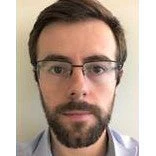
OSM has revolutionized geography. It is the ‘Wikipedia’ of mapping: anyone can edit the map by tracing features such as roads and buildings against free, high-quality satellite imagery. In contrast to other map services, the platform is entirely open: anyone can download a layer of the roads and buildings that make up the map. It is built for the people, by the people, in all regions of the world. It epitomizes the best features of open digital collaboration: leading-edge technology made freely available to all, regardless of location. Because everyone can contribute, OSM maps are often much more complete than commercial alternatives—especially in areas that are hard to survey, such as informal settlements.
The World Bank makes frequent use of OSM for research purposes, and occasionally supports one-off initiatives to complete OSM maps in specific areas, e.g. after natural disasters (Nepal and Haiti are recent examples). But we have put less effort into nurturing the community of altruistic mapping volunteers who make OSM so special, and play a critical role in keeping the map updated over time.
A recent series of initiatives, however, is bucking that trend. The Bank’s Digital Development team, working with DFID’s UKAid, TeachOSM, and the Geospatial Operations Support Team, is spearheading an Open Data program in the Caribbean that includes introducing client countries to OpenStreetMap—not just in theory, but in practice.
The team previously delivered trainings in Jamaica and St. Lucia; but its most ambitious training to date has just concluded in Saint Vincent and the Grenadines. Each training has evolved to become more in-depth and involved than the last. In Saint Vincent, the 4-day program went well beyond OSM viewing and editing to also include teaching on mobile mapping, and data visualization basics in QGIS (an open-source software package for working with geospatial data). The team worked with the National Telecommunications Regulatory Commission (NTRC), the telecoms regulator in Saint Vincent and the Grenadines, to deliver the training to 47 public and private sector participants with the right blend of skills, interests, and vocations to form the kernel of a sustainable OSM community in the country.
A challenge for the team in Saint Vincent and the Grenadines was involving the geographically disparate Grenadines. Transport to the islands can be expensive, irregular, and time-consuming. Eventually, due to the hard work of NTRC and the World Bank team, participants made it to the training from Mayreau, Union, and Canouan islands. The outcome, however, was well worth the logistical effort. The images below speak for themselves: while orange buildings had already been mapped, all the buildings in blue were added during the month of March 2018, when the training occurred.

Indeed, across the whole of Saint Vincent and the Grenadines, a lot was achieved over the week:
| New Buildings | New Roads (km) | ||
| Union | 1,000 | 31 | |
| Canouan | 360 | 31 | |
| Mayreau | 217 | 10 | |
| Mustique | 88 | 0 | |
| Bequia | 146 | 14 | |
| Saint Vincent | 1,448 | 205 | |
| Total | 3,259 | 291 | |



Join the Conversation